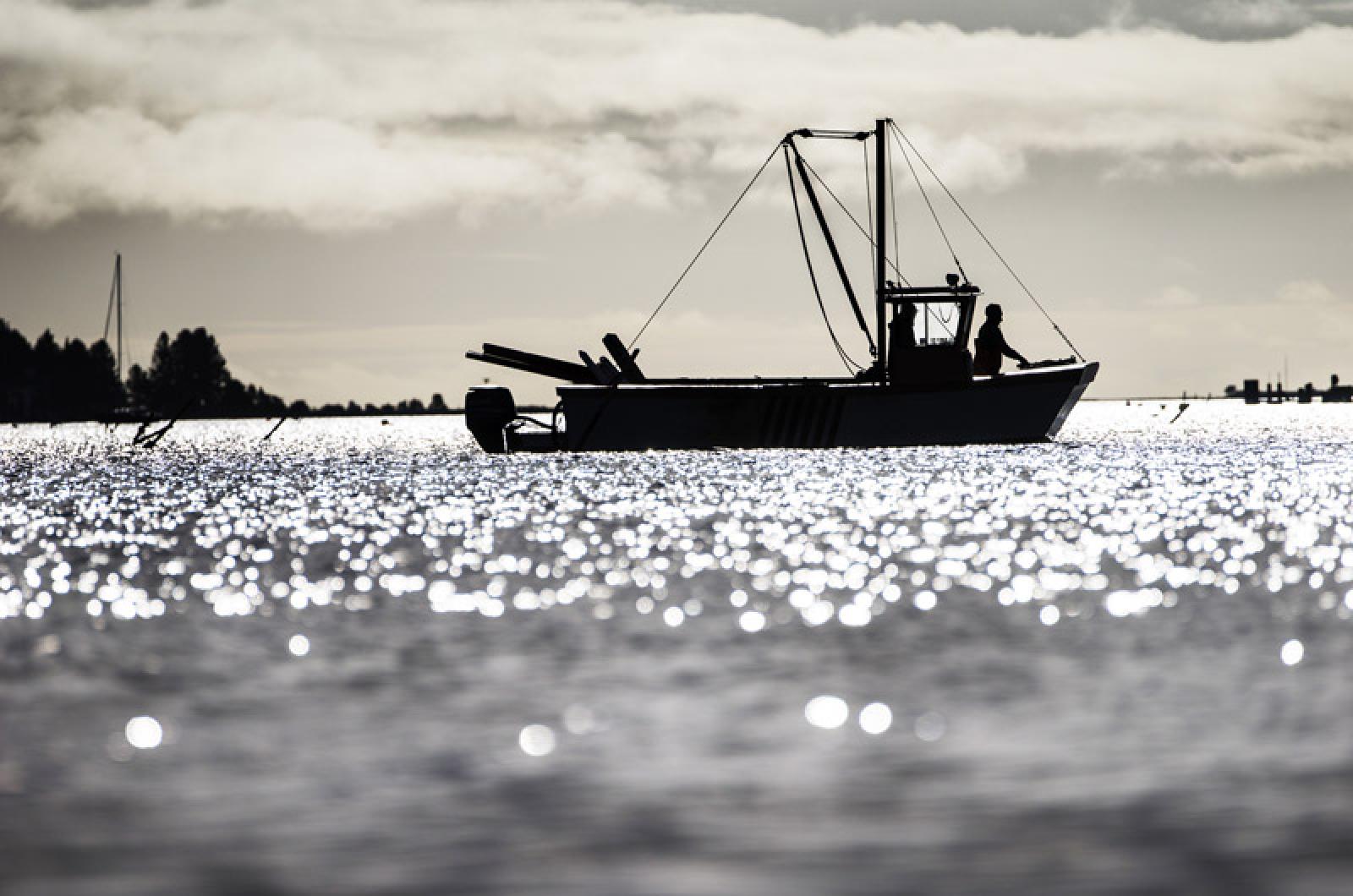Age is an issue of mind over matter. If you don’t mind, it doesn’t matter — Mark Twain
With all respects to Mr. Twain, I turn 65 this month and I’m afraid to say as much as I would like to deny it, age does seem to matter and it has been on my mind. As you might now expect from me, let us first consider age from a shellfish perspective.
In 2006, a marine research team studying climate change sampled a bed of ocean quahaugs off the coast of Iceland. It is known that this species, Arctica islandica, lives a very long time and the scientists hoped an analysis of their shells might provide insights into climate conditions in years past. Out of all the clams in the sample, one appeared to be especially ancient. Bivalve mollusks build their shells in such a manner as to form distinct annual rings. As with trees, a clam’s age can be estimated by counting the number of annual rings. Initial ring counts suggested that the quahaug was about 400 years old. It was named Ming, as it appeared to be a contemporary of that Chinese dynasty. Due to its advanced age, Ming was growing very slowly and its rings were too small to accurately count. In their search for the truth, the scientists shucked Ming so its shells could be processed to provide a more accurate measurement. Lo and behold, Ming the Mollusk was determined to be 507 years old and the oldest clam ever recorded!
I feel better already. I’m only 65, have a birth certificate and have no need to fear being sacrificed by birther scientists.
Age is really all relative. With respect to species, mice and hamsters are lucky if they live for a couple of years. Bees and house flies are old at four weeks. Marine microorganisms called gastrotrichs live only three days, and adult mayflies are lucky if they last a day. At the other end of spectrum are animals that are considered biologically immortal. One species of jellyfish reverts from the adult to a juvenile stage and starts again rather than dying. Hydras and flatworms regenerate and reproduce through binary fission (splitting) and appear to have no end.
To really confuse the issue further, we can ponder the relative aspects of time itself. Recently, atomic clocks have proven that Einstein was correct and the higher you live above sea level the faster you should age. Does that mean you stay younger if you live at ground level in Katama?
Then again there is the concept of biological age. It is a measure of your biological deterioration rather than a measure of time. Your genetic make-up plays a large role in how quickly you age, however, how you treat your body is also a factor.
Research in this area has shown that maintaining a substantially reduced caloric intake in lab rodents over the course of their lifetime significantly increased their longevity. Sorry, but this takes diet to whole new ascetic level.
The concept of aging is not limited to biological organisms. The deterioration of our coastal ponds is also considered an aging process. It is called eutrophication. The term eutrophic means “well nourished.” Interestingly, as in the lab rats, aging in ponds is related to the amount of nutrient input. Under natural conditions of low nutrients, eutrophication is a slow geological process. With increased nutrient input, especially nitrogen from human activities, the rate of aging has increased as much as tenfold. Taking the metaphor further, loss of eelgrass may be likened to going bald. Unnatural amounts of nutrient rich sediments are akin to fat deposits. Algal blooms that clog the ponds, restrict flow and reduce available oxygen mimic high cholesterol. Nitrogen overloads to our coastal waters are considered the greatest pollution threat to the health of our coastal ecosystems. Folks, we have a life-threatening obesity epidemic and need to reduce the excess nitrogen bloating our waterways!
We at the shellfish group depend on clean water and healthy marine ecosystems. With good water quality, we are able to produce millions of seed shellfish in our hatcheries. This year our production of seed quahaugs, scallops, oysters and mussels exceeded 40 million. With better water quality, it could be even higher. Likewise once they leave our hatcheries, the growth and survival of the seed shellfish depend on healthy coastal ponds with good habitat, adequate oxygen levels and no toxic algal blooms. We are committed to mitigating the nitrogen pollution killing our ponds. In addition to producing shellfish that help clean the water, we are undertaking cutting edge projects to address the nitrogen problem including experimental oyster reefs, ribbed mussel culture, kelp culture and innovative phragmites reed harvests.
In 2016 we proudly celebrate our 40th year of operation. Forty years is a ripe old age for an organization. We figure over all those years that we have spawned over four billion shellfish. Rather than rest on our laurels, we know our work is not done and we look forward to continuing our mission for many years to come. We are not old, but rather mature and experienced. I am blessed with a young and dedicated staff, all of whom were not even born when the organization began in 1976. They keep our vision fresh and our future, like that jellyfish, potentially immortal.
Back in 1976, the ponds were only beginning to show signs of decline. Let’s hope that one day I don’t need to repeat these words of George Burns: “When I was a boy the Dead Sea was only sick.”
Respect your elders. Please support us with your tax deductible contribution. Thank you.
Richard C. Karney is shellfish biologist and director of the Martha’s Vineyard Shellfish Group. The above essay is the shellfish group’s annual appeal letter that goes out each year.




Comments (2)
Comments
Comment policy »